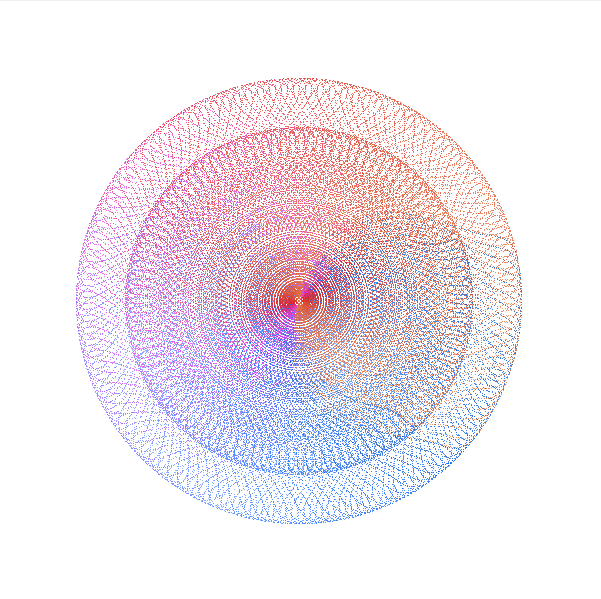Reaching 1.0
With the Harmonograph you can create beautiful and individual images within a few clicks. It's painting by pendulum. I already gave here an introduction. So let me just explain what is new:

TLDR: More pendula, more features, more colors, better control.
But the essence is that I took the time to solve some of the hard issues to make the process and the results as pleasant as I can. Basically the same I did last month for the Cellgraph.
Epi(c) - Pendula
Pendula really have only 3 arguments: frequency, amplitude and offset position. All the rest on top just helps you to get where you want to fast (invert this, flip that without changing the rest, playing wiht natural constants as factors). The other thing which adds complexity is damping. Frequency and radius/amplitude can be damped independently in two different ways with 4 different types of damping acceleration. This helps to recreate behaviour of the natural laws (physics) or to go off any reservation for creative purposes. What I improved is giving both processes the same degree of freedom and tweaking the constants and formulas so the result will be desirable.
Since the rotation (not a real pendulum but added with previous release) has no amplitude I used this parameter for zoom which is very handy at times.
But the biggest improvement was adding 2 lateral pendula which create and epicycle. Before the times of this pesky Gallileo guy, most people knew planets moved in epicycles (cycles on top of cycles) around the earth. A model that precisely explains the weird movements planets follow. Unfortunately physical planets favor something else. But this is where I got the idea from. When activated you will get another Pendulum in X-direction and Y direction called E and F which have their center at the point where the pen would have been. This is a source of many, many new shapes.
Functions
Since a pendulum is not much more than a stationary sinus function, I thought what would be if we swap it for tangent or some hyperbolic function. That I introduced in previous release but this time I tamed the asymptotic behaviour of these functions much better. I added also the possibility to connect pendula in strange ways for unprecedented shapes. I simulate higher frequencies by letting time fly faster for a pendulum. The you can use the differently moving time variable of another pendulum to build a term that gets plucked into the equation this pendulum, basically rewiring the basic math, transforming this Harmonograph in a complex harmonic machine.
Visual Settings
Here I changed not that much. The new pen styles doesn't do that much, just the color flow and dot density and drawing length can be controlled more meaningfully and the last two have now a slider for coarse changes and one for fine tuning.
More Colors
The second biggest change I got simply by importing the colors tab from the Cellgraph. So instead of 2 colors you got 10. And don't forget: these 10 colors are just like points in color space you can construct none linear gradients between. This way you get rainbows no one dreamed of.
All in all, please try it out. Thank you very much.
 Kephra, Articles, Books, Perl, Programming
Kephra, Articles, Books, Perl, Programming
Leave a comment